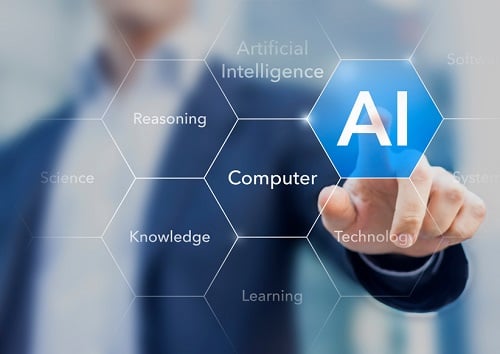The evolving capabilities of artificial intelligence could give it a significant future role in the life insurance industry

While the life insurance industry has not yet adopted artificial intelligence (AI) in its sales and underwriting processes, developments in the technology could make it a perfect solution down the road.
“Life insurance is a natural fit for the capabilities of AI because of the large, complex data sets with nuanced relationships, years of historical data, and a unique sales process in need of a facelift,” wrote Todd Rogers, chief technology officer at US-based life insurance start-up Haven Life, in an article published by VentureBeat.
The first opportunity lies in the pre-purchase education phase. According to Rogers, people could use AI bots to understand their insurance needs, get answers to questions about their financial condition, and gain confidence as they move toward a purchasing decision. “It must be highly sophisticated and personalized to be truly useful, however, or else customers [may] end up with ‘Sorry, I don’t understand that’ responses,” he clarified.
Another possible path for AI is to take an adaptive approach to insurance sales. By referring to specific customer profiles and inputs, irrelevant questions and steps could be avoided.
The underwriting process could also be improved through AI. With a large-enough population of applicants, machine learning technologies can discover patterns and relationships that are not likely to be revealed through human analysis. This presents opportunities to extract more value from information disclosed by life insurance customers, including “providing an instant decision on coverage and offering more competitive pricing due to higher accuracy and therefore less risk,” Rogers said.
Since machine-based underwriting relies on data and clearly defined underwriting rules, the technology’s application is still limited. However, current technologies can be programmed to know when the job should be left for a human who can do a more thorough review; they can also be designed to narrow down the details so that the human underwriter can focus on the relevant information.
Machine learning in life insurance, according to Rogers, relies on two main categories of data: applicant information and external data sources. In the application process, applicant information such as health history, lifestyle choices, and occupations is collected. These details are compared with information from similar life insurance buyers; a comparison model is built using a history of underwriting decisions and outcomes, third-party data sets, and specified underwriting rules. Using that model, an AI program can come to an underwriting decision about an applicant’s risk profile.
While AI’s effectiveness depends on data, it doesn’t mean it’s always better to gather more to feed into the model. “If you’re asking for more data from a customer, then you must be providing more value for the information they are handing over,” Rogers said, stressing the importance of ethical collection, analysis, and disposal of data. “From the machine’s standpoint, too many data points with too few example scenarios can create too many variables for the machine to successfully determine what is ‘significant.’”
Related stories:
“AI is coming for knowledge-based, white collar workers,” predicts LIMRA researcher
EY life insurance outlook highlights new solvency standard
“Life insurance is a natural fit for the capabilities of AI because of the large, complex data sets with nuanced relationships, years of historical data, and a unique sales process in need of a facelift,” wrote Todd Rogers, chief technology officer at US-based life insurance start-up Haven Life, in an article published by VentureBeat.
The first opportunity lies in the pre-purchase education phase. According to Rogers, people could use AI bots to understand their insurance needs, get answers to questions about their financial condition, and gain confidence as they move toward a purchasing decision. “It must be highly sophisticated and personalized to be truly useful, however, or else customers [may] end up with ‘Sorry, I don’t understand that’ responses,” he clarified.
Another possible path for AI is to take an adaptive approach to insurance sales. By referring to specific customer profiles and inputs, irrelevant questions and steps could be avoided.
The underwriting process could also be improved through AI. With a large-enough population of applicants, machine learning technologies can discover patterns and relationships that are not likely to be revealed through human analysis. This presents opportunities to extract more value from information disclosed by life insurance customers, including “providing an instant decision on coverage and offering more competitive pricing due to higher accuracy and therefore less risk,” Rogers said.
Since machine-based underwriting relies on data and clearly defined underwriting rules, the technology’s application is still limited. However, current technologies can be programmed to know when the job should be left for a human who can do a more thorough review; they can also be designed to narrow down the details so that the human underwriter can focus on the relevant information.
Machine learning in life insurance, according to Rogers, relies on two main categories of data: applicant information and external data sources. In the application process, applicant information such as health history, lifestyle choices, and occupations is collected. These details are compared with information from similar life insurance buyers; a comparison model is built using a history of underwriting decisions and outcomes, third-party data sets, and specified underwriting rules. Using that model, an AI program can come to an underwriting decision about an applicant’s risk profile.
While AI’s effectiveness depends on data, it doesn’t mean it’s always better to gather more to feed into the model. “If you’re asking for more data from a customer, then you must be providing more value for the information they are handing over,” Rogers said, stressing the importance of ethical collection, analysis, and disposal of data. “From the machine’s standpoint, too many data points with too few example scenarios can create too many variables for the machine to successfully determine what is ‘significant.’”
Related stories:
“AI is coming for knowledge-based, white collar workers,” predicts LIMRA researcher
EY life insurance outlook highlights new solvency standard



